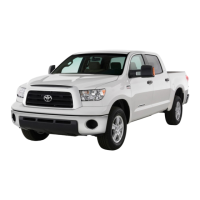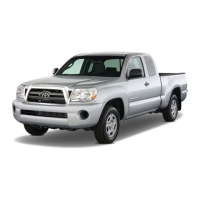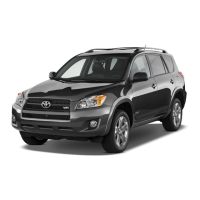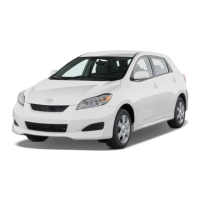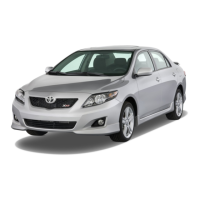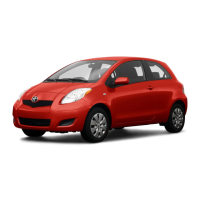Do you have a question about the Toyota 2009 Tundra and is the answer not in the manual?
Details about master keys, valet keys, and key number plates for vehicle access.
Instructions for using the wireless remote, key, and door lock switches for security.
How to adjust seats, mirrors, and the steering wheel for optimal driving comfort and control.
Operation of power windows and the lock switch for passenger control.
Instructions for opening, closing, and tilting the moon roof for ventilation.
Steps for opening the fuel tank cap and information on recommended fuel types.
Information on the engine immobilizer system and alarm functions for vehicle security.
Explanation of how SRS airbags deploy and safety precautions for occupants.
Guidelines for selecting and installing appropriate child restraint systems for passenger safety.
Procedures for starting the engine, driving, stopping, and parking the vehicle safely.
Explanation of the different engine switch positions and starting procedures.
How to select appropriate shift positions and understand their functions for optimal driving.
Operation of turn signals for lane changes and standard turns.
How to engage and release the parking brake and related warnings.
Explanation of the instrument cluster gauges, meters, and indicators for vehicle status.
Information on various indicator and warning lights and their meanings for system status.
Instructions for setting, adjusting, and using the cruise control system.
How to select transfer modes for the four-wheel drive system.
How to activate and use the AUTO LSD system for improved traction.
Operation of automatic and manual air conditioning systems, including temperature and fan control.
How to use the radio, CD player, MP3/WMA playback, and AUX adapter.
Overview of the rear seat entertainment system components and operation.
How to connect and use a cellular phone via Bluetooth® for calls and voice commands.
Overview of interior lighting features like foot lights, personal lights, and cargo lamps.
List and location of various storage compartments in the vehicle, including glove boxes and cup holders.
Instructions for programming the HomeLink® system to operate garage doors and other devices.
How to operate and calibrate the vehicle's compass for directional indication.
Procedures for washing, waxing, and protecting the vehicle's exterior from damage and corrosion.
Methods for cleaning leather and synthetic leather interior areas using appropriate solutions.
Overview of general, scheduled, and do-it-yourself maintenance tasks and recommendations.
Identification of key components in the engine compartment for self-maintenance checks.
Information on checking tire condition, rotation, and the tire pressure warning system.
Guidance on selecting and precautions for replacing wheels, ensuring compatibility.
How to remove, clean, and replace the air conditioning filter for optimal efficiency.
Steps for replacing the battery in the wireless remote control for proper function.
How to check and replace blown fuses in the engine compartment and under the instrument panel.
Instructions for replacing common exterior and interior light bulbs.
How to use emergency flashers in case of vehicle malfunction or accident.
Procedures and recommendations for towing the vehicle safely using various methods.
Symptoms indicating potential vehicle issues and when to contact a Toyota dealer for assistance.
Actions to take when warning lights or buzzers activate, or warning messages are displayed.
Step-by-step guide for removing a flat tire and replacing it with the spare tire.
Troubleshooting steps when the engine fails to start, addressing potential causes.
Emergency procedure to shift the lever if it's stuck in Park due to the shift lock system.
Procedures to free the vehicle if it becomes stuck in mud, dirt, or snow by rocking or using traction aids.
Steps to take when the engine overheats, including checking coolant and fan operation.
Key vehicle dimensions for different cab types, bed lengths, and drive systems.
Weight limits for occupants and luggage based on model, cab, and bed configurations.
Towing capacities for various models, including weight limits and conditions for safe towing.
Specifications for different engine models, including bore, stroke, displacement, and valve clearance.
Information on recommended fuel types, octane ratings, and fuel tank capacity for gasoline and flex-fuel engines.
Details on oil capacity, grade, viscosity, and recommended oil for different engines.
Information on tire sizes, recommended inflation pressures, wheel nut torque, and types.
How to report vehicle safety defects to NHTSA and Toyota Motor Sales.
Guidelines for loading campers, understanding center of gravity, and cargo weight ratings.
| Brand | Toyota |
|---|---|
| Model | 2009 Tundra |
| Category | Automobile |
| Language | English |
